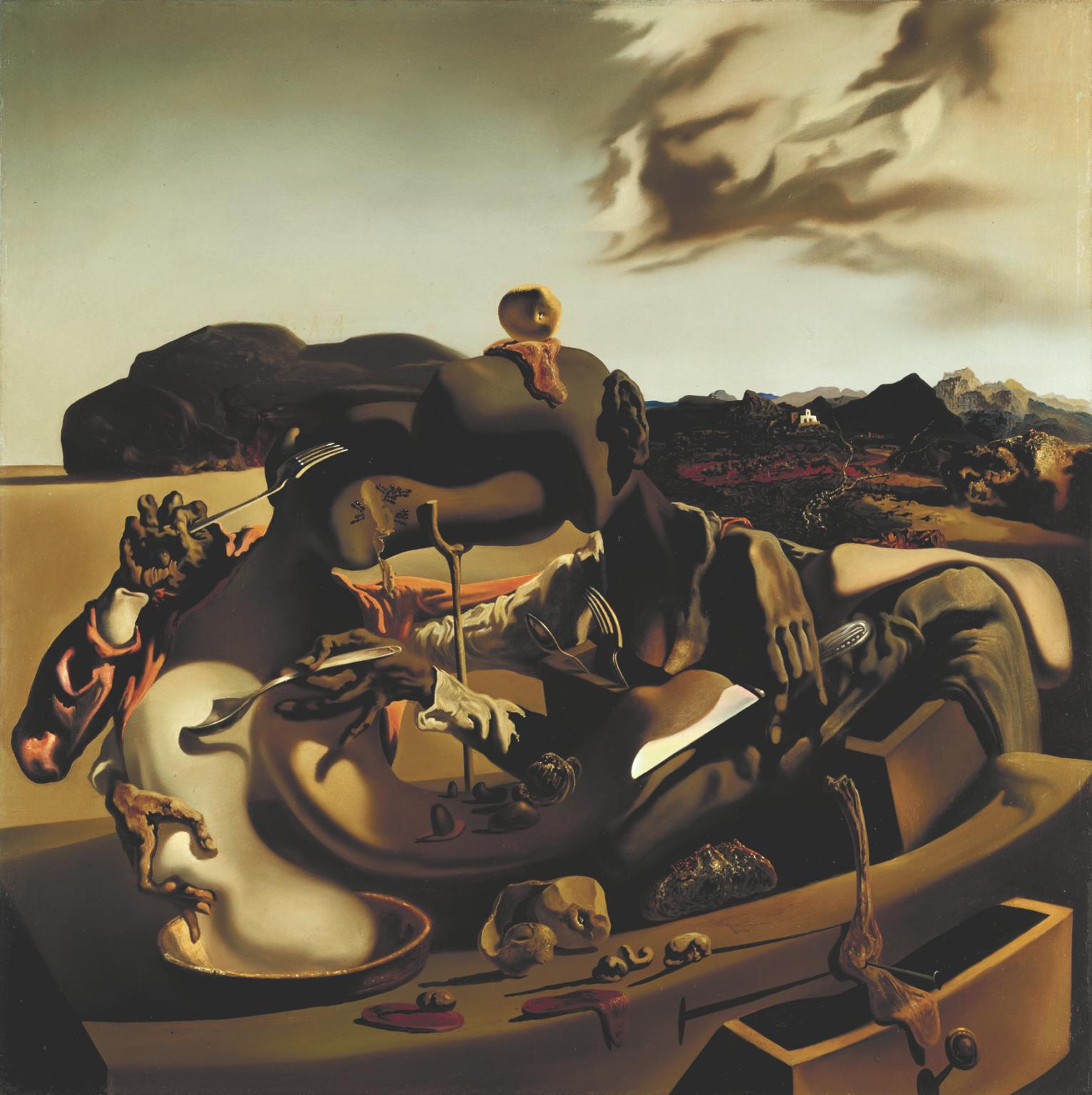Shortly after the start of the Spanish Civil War in 1936, Salvador Dali painted the work known as Autumnal Cannibalism. It is an oil on canvass painting that measures 65cm by 65cm. Edward James purchased the picture from the artist in 1936. He later sold it to the Tate Museum in 1975 where it continues to remain. Dali's Autumnal Cannibalism presents a thought-provoking view of the horror and destruction of war. Critics claim that the painting also shows the consuming nature of sexual relationships. The painting appears almost tranquil like suggesting that Dali's view of the conflict was almost indifferent. Unlike other Surrealists, Dali did not take sides in the war. The background s of a rocky landscape set against a Catalonian beach. In the centre is a bloody lake and in the distance a single white house. On the beach is a chest of drawers. Sitting on top of it are the top halves of a male and female figure.

They appear locked in a cannibalistic embrace. One hand is holding a fork while another is holding a polished knife. Both are eating into each other. Mixed in with the figures in the picture are other signs and symbols. For example, there are bits of meat placed on the chest of drawers and figures. As well as symbolising death, it can also refer to the passing nature of life and human's animal nature. Balanced on the head of one of the figures is an apple. For Dali, this was a way of showing the struggle between father and son. The peeled apple below it symbolises the death of the son. With his mad expression and famous moustache, Dali’s legacy has made him a cultural icon for surrealism. As a result, modern surrealists view Dali as an important source of inspiration.